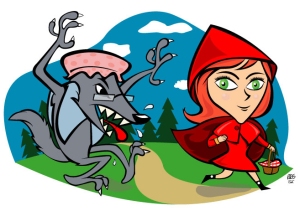 In my last post, I began to discuss the importance of storytelling in turning a cause into a social movement. Movements use stories to instigate action, not just attention. So how can we use stories to transform passive donors into engaged activists? There’s a formula. This is part 1.
In my last post, I began to discuss the importance of storytelling in turning a cause into a social movement. Movements use stories to instigate action, not just attention. So how can we use stories to transform passive donors into engaged activists? There’s a formula. This is part 1.The 4 basic components of a story are: a setting, characters, a plot, and a moral. The setting and characters are supposed to be familiar to us – we should be able to relate to them. We know what a dark and stormy night looks like and we know how an aging but wily detective acts. Conversely, the plot is supposed to shock us. An unfamiliar conflict arises in a familiar setting. Aliens invade earth, an enormous shark attacks a placid beach, a wolf eats your grandmother. These are the stories we remember.
Here’s the point: The greater the dissonance between the familiar setting and the surprising plot, the greater the impact of the moral.
That’s why we’re fascinated by stories of “normal” people acting extraordinarily. That’s why we love books like “Chicken Soup For The Soul” and why we can’t stop watching movies like “Alive.” We can truly identify with the “everyman” characters in these stories but are shocked by their actions.
We are biologically designed to be this way. Our brain uses our 5 senses to constantly survey the landscape, pick up on patterns, and use them to anticipate what will happen next in order to keep us out of danger. It’s when this “guessing machine” is broken that all sorts of alarms go off in your body – i.e. adrenaline. Have you ever asked someone what happens next in a horror movie? Humans don’t like uncertainty and that’s what makes us take action.
This is of course how advertising works. In a 30 second story they create a familiar backdrop and then throw in something utterly out of the ordinary. A linebacker suddenly tackles your co-worker or a car suddenly totals your VW.
One of the best recent examples of this principle of dissonance being applied to cause marketing is the Truth campaign aimed at lessening teen use of cigarettes. The agency that created the campaign, CP+B, first determined a fundamental trait that all teens relate to: rebellion against authority. Coincidentally, being iconoclastic is a main cause of smoking in the first place so they knew any ad that preached the negative consequences of smoking, no matter how gruesome or evocative, would be dismissed like every other admonition coming from elders.
Instead, they used that trait to provoke ire for a different authority figure: big tobacco. Each TV spot would start the way typical cigarette ads would – cowboys on a cattle ranch or skydivers getting ready for a rush (the familiar setting). Except, instead of skydivers or cowboys there were body bags (the dissonance). The ads summoned a familiar emotion and then broke teens’ guessing machines. 66% of teens who were exposed to these ads were more likely to quit – a shocking success.
There are two components to applying this to your own causes.
1. You must find that critical insight – the human truth that links the followers of your cause. It may be a need for rebellion or it could be a feeling of duty to protect animals, but this insight must be unique to your constituency. This is, in effect, your brand.
The best way to uncover this insight is to do some qualitative research. Figure out what emotions people associate with your cause. Figure out what similarities your employees share. Or hire reserach experts like BRANDEMiX ;)
2. Once the insight is determined, figuring out how to frame your story becomes very clear. You must create uncertainty in the world and let people figure out how best to resolve it. Those that are affected will join your cause.
Check back next week for part of 2 of using stories to inspire action.

No comments:
Post a Comment
Note: Only a member of this blog may post a comment.